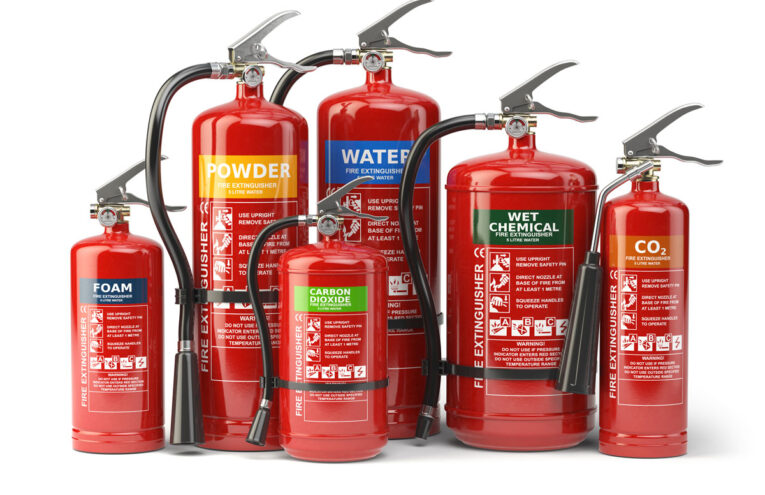Fire Extinguisher Types:
These extinguishers are used for ordinary combustibles like wood, paper, and cloth. They typically use water or foam to put out the flames.
Designed for flammable liquids such as gasoline, oil, and grease, Class B extinguishers often use foam, CO2, or dry chemical agents to smother the fire.
These extinguishers are for electrical fires involving appliances, circuits, or wiring. They use non-conductive agents like CO2 or dry chemicals to avoid the risk of electrical shock.
For metal fires (e.g., magnesium or titanium), Class D extinguishers contain a dry powder that is effective at putting out fires involving combustible metals.
These are specifically for kitchen fires, often involving cooking oils or fats. Class K extinguishers use a wet chemical agent to quickly cool and suppress the flames.
Our team will always choose the right extinguisher to install. Always ensure you have the appropriate extinguisher for the specific risks in your environment.
Our team will always choose the right extinguisher to install. Always ensure you have the appropriate extinguisher for the specific risks in your environment.
Choosing the right type of fire extinguisher is crucial for effectively containing a fire and minimizing damage. Always ensure you have the appropriate extinguisher for the specific risks in your environment.
Each fire type behaves differently, and the extinguishing agents are formulated to target those unique behaviors. Using the correct fire extinguisher ensures that the fire is suppressed quickly and safely, minimizing property damage, reducing the risk of injury, and preventing the spread of the fire. Additionally, having the right extinguisher on hand can help save lives, as a wrong choice might not only fail to extinguish the fire but also put you and others in greater danger. That’s why it’s essential to understand the specific fire risks in your environment and be equipped with the appropriate extinguisher for each scenario. Choosing the right type of fire extinguisher is critical because using the wrong one can make a fire worse or even cause additional hazards. For example, using water on an electrical fire (Class C) can result in a dangerous electric shock or spread the flames. Similarly, applying a Class A extinguisher (water or foam) to a grease fire (Class K) in a kitchen can cause the fire to escalate, as the water could cause the oil to splatter and spread the flames.


